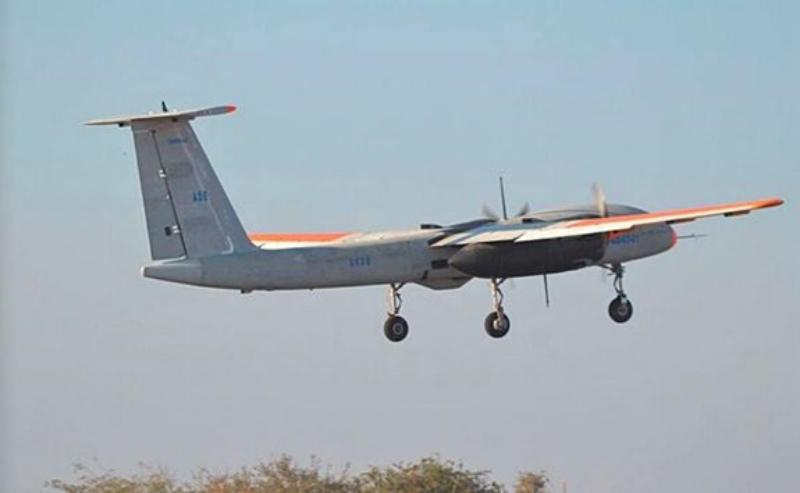India’s Defence Research and Development Organisation (DRDO) has demonstrated the Rustom II medium-altitude long-endurance (MALE) unmanned aerial vehicle’s (UAV’s) ability to take off and land autonomously.
The milestone was announced by the DRDO on 13 November. During the trial, the Rustom II also demonstrated its ability to utilise India’s GAGAN satellite-based navigation system, the agency added.
The Rustom II is a twin turboprop-powered UAV that has been designed for intelligence, surveillance, and reconnaissance (ISR) missions. It has an overall length of 9.5 m and a wingspan of 20.6 m. It can carry payloads such as gimballed electro-optical sensors of up to 350 kg.
The vehicle has been developed by Bangalore-based Aeronautical Development Establishment in conjunction with the state-owned Hindustan Aeronautics Limited and Bharat Electronics Limited. It comes from the Rustom family of UAVs, the first of which was revealed in 2009.
The Rustom II is propelled by two three-bladed propellers driven by two Saturn 36T turboprop engines, each rated at 74.57 kW (100 hp). It has a tricycle landing gear with a T-shaped tail assembly and shoulder-mounted wings to improve the perceptibility of its payload systems.
The UAV has a service ceiling of about 35,000 ft, a loitering speed of about 67 kt, and a maximum speed of 121 kt. For surveillance missions, the UAV can loiter on-station for about 24 hours.

